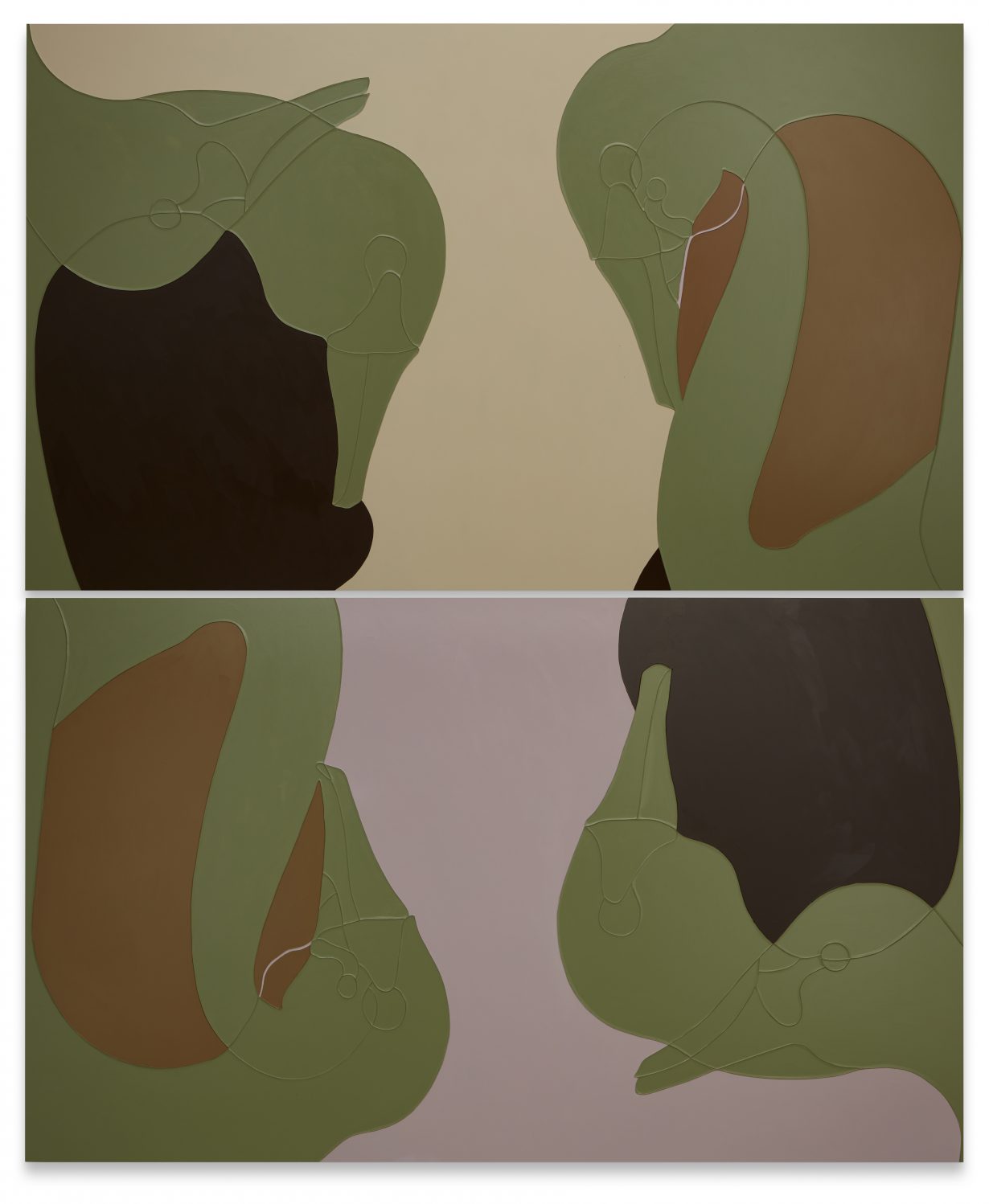Mirrors and other creatures at Sprüth Magers, London finds the YBA artist conceptually hovering between the two registers of artistic culture and design value
Gary Hume’s paintings have long refused the easy way through to an image. Painting with everyday household paints in wonky, glossy compositions of bright, flat colours, where only line and outline could do the job representing something, Hume emerged during the 1990s perfectly attuned to the cheery cynicism and performative vulgarity of the Young British Artists. Some of his first paintings of note were of brightly coloured circles and squares – jokey postmodernist abstractions, but really the designs of hospital doors slammed in the viewer’s face, the artist laughing somewhere offstage.
It would be trite to say that older age has made Hume more serious, but Mirrors and other creatures presents paintings that hone and refine his long-term preoccupations, while not leaving much to play or whimsy or bombast. If there’s a recurring motif here, it’s the outlines of the head and long neck of a bird, a goose maybe, or a swan. A large diptych (all works Untitled, 2024) sets out overlapping outlines of the birds, the lines standing proud of the otherwise uniform surfaces of paint they circumscribe. The top section is the upside-down twin of the part below, even if the colours are different: the birds in a mute khaki green against a dull cream in the top part, a lifeless mauve in the other. The birds are, representationally speaking, neither here nor there, hovering somewhere in the mind’s eye. As an odd accent, a tracery of pink threads its way along the line of a beak.
This game of overlapping outlines, ridged and filled in with colour like enamel cloisonné, dissolves away Hume’s older reliance on flat colour and bold outlines to singular subjects, even if these were always obscured, silhouetted or blocked out. There’s a deadpan humour to this idle filling-in of crisscrossed lines, the kind of doodling exercise that generates itself, such as the skewed assembly of apparently abstract Calderesque blobs and warped off-white geometries of another Untitled, but which reveal, once more, the presence of two (or three?) beaked heads hidden in the intersections of the surrounding black. These optical games are reduced to their essence in the almost art nouveau-stylishness of the charcoal-on-canvas works, where the birds are reduced to interpolated blacks and whites.

It’s tempting to see these birds, with their animal muteness and watchful attention, as Hume’s further comment on the treachery of images and image-making. This a painter almost puritanically opposed to naturalism, modelling, light and shade, and illusionistic space, so much so that blankness and opacity become rebuttals of the pleasure of looking ‘into’ a painting, pushing us back to the more materialistic delights of colour, line and surface finish, flirting all the while with the latest colour fads of interior design.
But at the same time, they’re flirting with the presence of the image too, making for an odd object conceptually hovering between these two registers of artistic culture and design value. To make the point, compositions are exactly reproduced in oil-on-aluminium and charcoal-and-pastel-on-canvas versions, notably one wobbling black mass with coloured insets, looking faintly like a forgotten Hans Arp painting, oozing midcentury modernist pretence. There are jokes, too, to alleviate the conceptual and art market irony: in another gallery a tall painting, black columns either side of a deep green, is obscured by a silly curtain of silver tinsel strands, dangling from the top edge. What becomes apparent is Hume’s commitment to a sort of awkward self-consciousness – to do with seeing oneself seeing, experiencing the shifting sands of taste in real time – and to the playful fiction that these paintings (though it’s an absurd thought) might be looking back.
Mirrors and other creatures at Sprüth Magers, London, through 19 October
